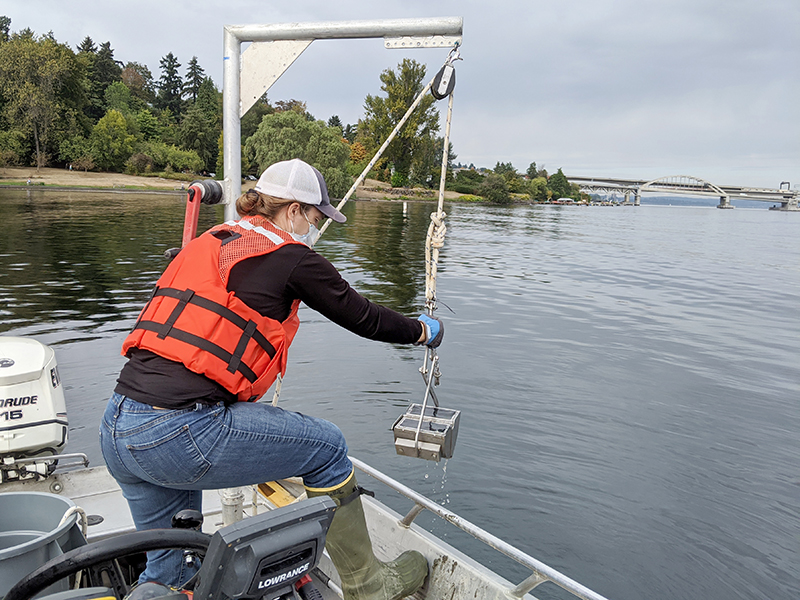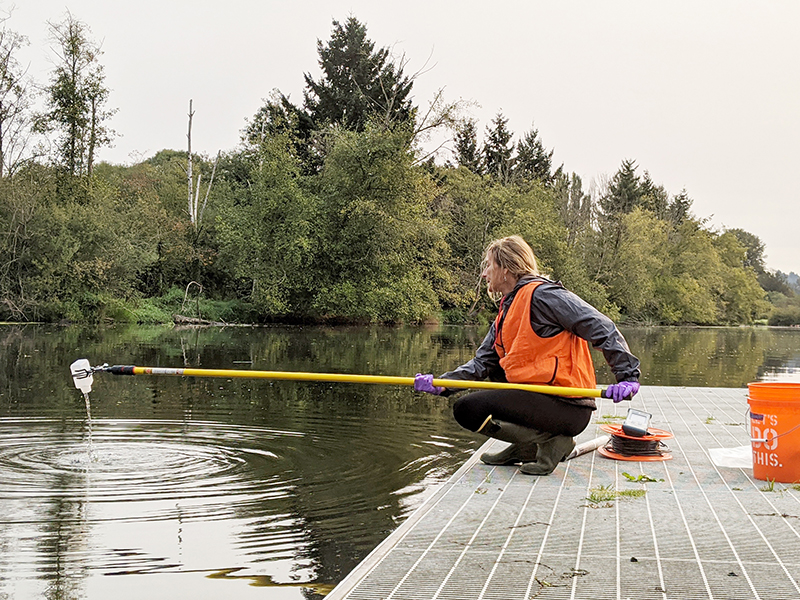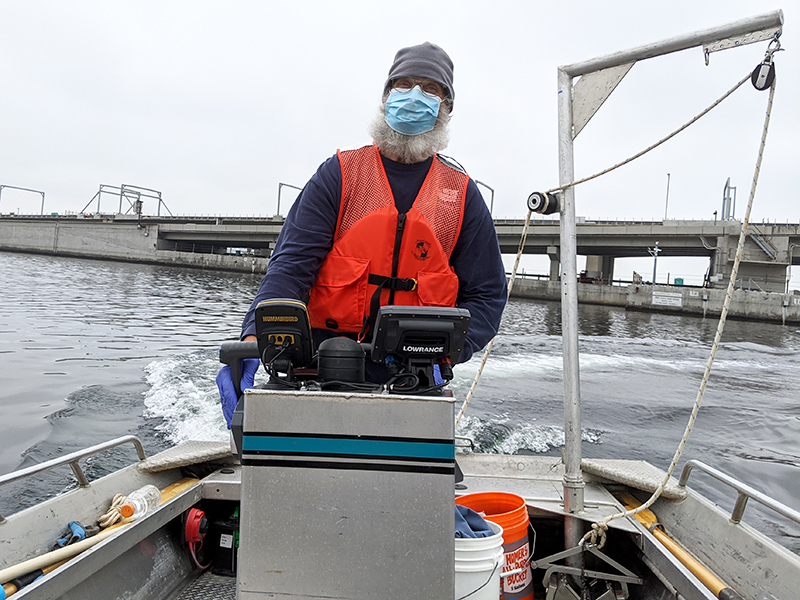
Scientists from our Toxic Studies Unit recently completed the first round of sampling as part of a new study of per- and poly-fluoroalkyl substances, also known as PFAS, in Lake Washington and its tributaries.
What are PFAS
PFAS are a large group of chemicals used in many industrial and consumer products, such as those with non-stick or stain-proof coatings, and fire-fighting foams. Manufacturers in the United States have used PFAS since the 1950s. They began phasing out certain compounds in the 2000s due to concern over their toxicity and persistence in humans and the environment. PFAS enter the environment through manufacturing emissions, as well as the use and disposal of products containing PFAS. PFAS are widespread in the environment and some compounds build up in aquatic food webs leading to elevated concentrations in predator fish species.
PFAS are bioaccumulative, meaning they can build up in the tissues of living organisms and they come with a host of potential health risks including:
- Thyroid disease
- Increased cholesterol levels
- Ulceritive colitis
- Increased risk of some cancers
Humans can ingest these toxins by eating contaminated fish and drinking contaminated water.
Earlier studies
In 2008, we carried out the first statewide testing of PFAS in Washington’s rivers and lakes to determine their occurrence in freshwater systems. We found PFAS in surface waters, fish tissue, and osprey eggs throughout the state, at concentrations consistent with other non-point source waterbodies in North America. We conducted another survey in 2016 to see if concentrations had changed since the first round of sampling, following shifts in manufacturing. The 2016 results showed a general decrease of PFAS in surface water samples compared to 2008. We found no change was apparent in freshwater fish tissue or osprey eggs.
In both studies, the highest PFAS concentrations observed across the state came from urban lakes sampled in Western Washington. Surface waters from the urban lakes displayed distinct compound profiles from other waterbodies. Urban lakes contained a higher relative percent contribution of PFAS, which is highly bioaccumulative. Fillet and liver tissues of freshwater fish collected from the urban lakes contained the highest PFAS concentrations statewide. The highest osprey egg concentration was found at Lake Washington, as well.
Our objectives
The current study is a follow-up to the 2008 and 2016 studies. Our objectives are to characterize, identify, and prioritize pathways and sources of PFAS to Lake Washington. The study will be completed in two phases.
Phase 1 began this summer and will continue through fall and winter focuses on characterizing PFAS contaminant pathways in the Lake Washington watershed.
Phase 2 will focus on identifying and prioritizing potential sources to the lake. As part of the initial characterization in Phase 1, we will collect PFAS samples from Lake Washington, tributaries to the lake, stormwater, and precipitation.
The ultimate goals of the study are to find and reduce external sources of PFAS in the lake, as well as apply what we learn to other urban waterbodies in Washington with PFAS contamination.




